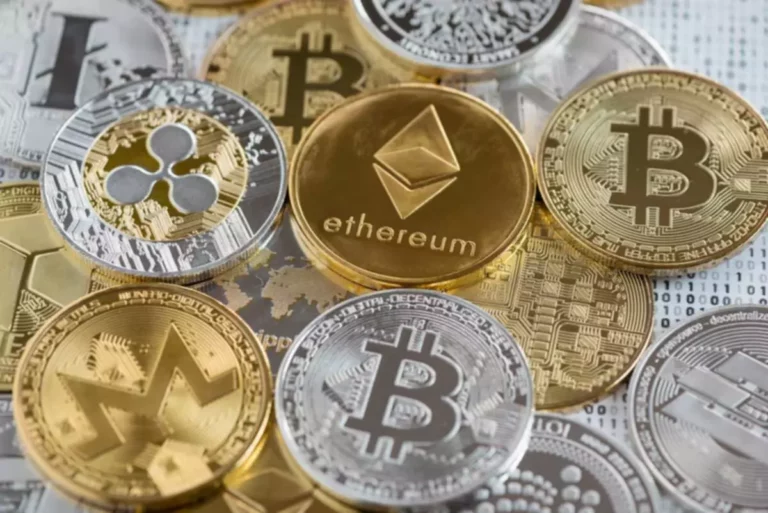Content
In the context of traditional banking, this procedure would often be overseen by financial organisations such as banks and other similar establishments. These organisations are accountable for the protection of funds, the transfer of funds, the verification of transactions, and the documentation of transactions. The nature of your trading crypto peer to peer request can lead to factors like price drift, which might result in not securing your desired rate. Conversely, peer to peer trading empowers you with more control over the transaction terms, price, and selection of your trading partner. In traditional finance, this process is carried out by banks and other financial institutions.

Best P2P Cryptocurrency Exchanges Compared
They generally have a platform that provides services and uses smart contracts to ensure transactions between parties are completed. So, all crypto exchanges act as intermediaries or trusted third parties in transactions, which further diminishes one of the primary tenets behind cryptocurrency—removing all intermediaries. What truly sets Binance P2P apart is its zero-taker fee structure, allowing traders to maximize their profits. The platform offers extensive flexibility, from low-cost transactions Yield Farming to high liquidity, catering to both new and experienced traders.
The 7 Pros and Cons of P2P Crypto Trading
These institutions are responsible for storing and transferring funds from one account to another. Strong encryption standards, two-factor authentication, and continual monitoring for suspicious activity are examples of security measures. Cwallet strives to create a safe environment for completing transactions by emphasizing the protection of user information and finances. This delay typically occurs when one participant in the transaction takes longer to confirm, contrasting with the quicker, https://www.xcritical.com/ more direct process seen in traditional trading systems.
Peer-to-Peer vs. Centralized Exchanges
In this case, the smart contract executes when two parties enter an agreement and transfer funds from one account to another. The contract then releases the funds to the seller and transfers ownership of the item to the buyer. This customizable approach enables merchants to use tools and services tailored to their unique business models, operational requirements, and customer interaction initiatives. For example, a merchant with an international client base may profit from Cwallet’s broad currency support, while another may emphasize its security features to gain consumer confidence. Cwallet’s approach to providing exclusive services suited to merchants demonstrates its dedication to meeting the specific needs of diverse users. Recognizing that every business has different demands, Cwallet offers specific features and services to improve operational efficiency and customer service.
What is P2P cryptocurrency exchange
Since you transact with other users directly, you are given the freedom to do so with little or no extra cost. Quick access to funds is critical for businesses to sustain cash flow, allowing them to reinvest in their operations, control expenditures, and respond to market changes quickly. This feature solves the time gap between transaction and settlement, impacting liquidity and operational efficiency. In the digital age, when online financial transactions are becoming more common, security becomes increasingly important.
This volatility can create uncertainty for users, particularly in transactions involving large sums. Stablecoins, which are cryptocurrencies pegged to stable assets like the US dollar, offer a solution by providing price stability. Cryptocurrency transactions are typically faster than traditional banking methods, especially for cross-border payments. This speed enhances the user experience on P2P marketplaces and encourages repeat transactions. By eliminating the need for payment processors, cryptocurrency transactions often incur lower fees compared to traditional payment methods. Lower fees are a significant advantage in P2P exchanges, especially for frequent traders.
The purpose of these caps is to reduce risks, such as fraud and money laundering, by controlling the flow of funds through the platform. Verified users, on the other hand, enjoy higher transaction limits, which allows for more significant trading opportunities. BitValve sets trading limits on accounts that have not completed the verification process. These unverified accounts are allowed to trade only within a fixed limit, which can frustrate users wanting to conduct high-volume trades without going through the KYC process. The trade can be executed once a buyer agrees on the rates at which the seller is willing to trade Bitcoin or other altcoins. A timer is set and the seller is expected to fulfill the trade within that window or the trade is canceled.

To start trading, users must create an account on a cryptocurrency exchange. Once set up, they can buy, sell, or trade a range of cryptocurrencies, including well-known options like Bitcoin (BTC), Dogecoin (DOGE), and Ether (ETH). Paxful is one of the most popular peer-to-peer crypto networks for sales and purchases of digital assets. The platform, one of the original P2P marketplaces, has since expanded its services to over nine million users across 50 countries since its launch in 2015.
Unlike some traditional platforms, these P2P venues often skip transaction charges and advocate for users to manage their own digital assets in personal wallets. The speed of transactions on P2P platforms can vary depending on the chosen payment method but typically surpasses that of conventional exchanges. Furthermore, traders on P2P platforms enjoy the freedom to establish flexible trade orders, granting them greater control over their trading operations. Collectively, these attributes render P2P crypto trading platforms as versatile and user-centric, making them an ideal choice for those engaged in the vibrant and ever-changing cryptocurrency market. Peer-to-peer marketplaces powered by cryptocurrency payments represent a significant leap forward in digital commerce.
This decentralized form of trading offers a stark contrast to the workings of centralized exchanges (CEXs), bringing a distinctive blend of advantages and challenges. P2P trading allows users to bypass intermediaries typical of CEXs, offering them complete control over their trades, from setting prices to choosing settlement times and trading partners. One of Remitano’s strengths is its focus on financial inclusion in emerging markets, where access to traditional banking services is often limited.
What happens if the seller receives payment, then proceeds to block the buyer and not mail them the product that they purchased? Peer-to-peer lending is loaning your cryptocurrency to someone else with terms and conditions. Generally, you can choose the interest rate you want to charge and stake your crypto in a lending pool.
- Additionally, all traders on the platform are verified to improve the platform’s aversion to fraudulent users.
- With currencies, P2P refers to the exchange of cryptocurrencies, which were created to enable anonymous P2P transactions that don’t require processing by a financial institution.
- With OKX’s extensive user base and support for a wide range of payment options, users can quickly find suitable trading pairs and complete trades efficiently.
- As these crypto acquisitions happen between participants outside of standard exchanges, this form of trading is often referred to as “peer-to-peer” or “OTC transactions”.
- With equal rights and responsibilities, the integrity of the P2P system is upheld by consensus algorithms that verify transactions and prevent issues like double-spending.
Binance P2P allows users to select their preferred payment method and the amount they intend to pay for the projected service. The Paxful marketplace offers over 350 payment methods, including bank transfer, credit/debit cards, and PayPal. The least amount to trade with is $10 – but this still largely depends on the offers available. One major attraction for traders who use Paxful is the ease of access to its marketplace. Paxful makes this list because it’s reputable and reliable with a variety of payment options, however, its major con is the fees for completed transactions.
As these crypto acquisitions happen between participants outside of standard exchanges, this form of trading is often referred to as “peer-to-peer” or “OTC transactions”. P2P crypto trading platforms offer better opportunities to earn than traditional exchanges because there are no central authorities that set the prices. P2P platforms also usually have higher liquidity than traditional exchanges because of the number of people using them. As a result, you won’t have to wait long until you find a buyer and seller for your asset.
The P2PE Standard defines the requirements that a “solution” must meet in order to be accepted as a PCI-validated P2PE solution. A “solution” is a complete set of hardware, software, gateway, decryption, device handling, etc. Only “solutions” can be validated; individual pieces of hardware such as card readers cannot be validated. It is also a common mistake to refer to P2PE validated solutions as “certified”; there is no such certification. P2P exchanges work without an intermediary, so the interaction algorithm looks different. And when they find it, they bind the participants together, so that they already agree on additional characteristics of the exchange.
Buyers can search for offers they’re interested in and view the details before purchasing. Backed by a blockchain network, they can better withstand the onslaught of hackers than traditional exchanges. This transparency ensures that all parties can verify the details of a transaction without relying on a third party.
